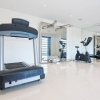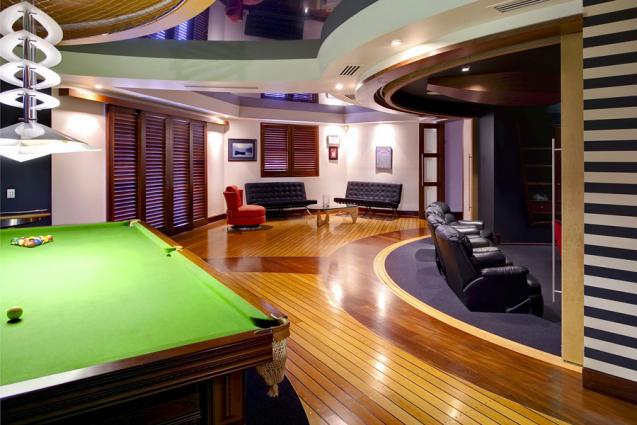
Designing the perfect home gym
It might surprise you to know how much design work goes into creating the perfect home gym. A lot of people seem to think it’s simply an empty room that you then fill up with gym equipment, but there’s actually quite a bit more to it than that. As with any great space creating a great home gym requires some careful planning.
Location
The first thing to consider is where your gym is going to be situated within your property. Note I’ve said property as some people may choose to have their gym separate to their actual home.
Often people are happy enough to use their garage or a spare bedroom to house their gym equipment, and whilst these spaces can work, I’m focusing this article on the ‘perfect’ home gym, meaning a dedicated space that’s custom built for the task. For many people, having a dedicated space works as a motivator and improves the quality of their workouts as a result.
Of course no one gym design will be considered perfect for everybody. There are a range of different health and fitness requirements and a wide range of exercise styles. But some elements of gym design are consistent across all disciplines and location is one of those.
Unlike other parts of the home where you want connection, a home gym typically benefits from isolation. It can be a noisy place with plenty of banging, grunting, groaning and loud music, so you definitely don’t want it near the sleeping zones of your home.
If you have a two-storey home and you want to put your gym upstairs, thought needs to be given to noise suppression to keep the sounds from your gym travelling through the floor and into the ceiling space of the lower level.
Space
How much space you’re going to need depends largely on the type and size of the equipment you intend to put in your gym.
For example cardio equipment like treadmills, rowing machines or exercise bikes need between 2.5 – 3 square metres. An all-in-one multi-gym will need between 3.5 – 4.5 square metres depending on the machine.
You will most likely also want some floor space for things like crunches, planking, push-ups and stretching, so as you can see for the ultimate home gym you might need a reasonable sized area. But that’s not to say it has to be huge. It all comes down to clever planning and design, which is where dsarchitecture comes in.
Ventilation and temperature control
Gyms can be (at least they should be) sweaty places so ventilation is important. Being able to open windows or doors to air the space is ideal and typically preferable over exhaust fans.
The goal for most gyms is to warm up and work up a sweat. However that’s not to say that you want the room itself to be hot. In fact, a hot room will often reduce the effectiveness of your workout as you fatigue too quickly, reducing the amount of time you can spend exercising.
Natural breezes and cross ventilation can help, however if you are doing a noisy workout you might not want a lot of open windows and doors particularly if you want to stay friends with your neighbours. Reverse cycle air-conditioning in one option, but ceiling and wall mounted fans can also do the job if the space has been well designed.
Flooring
This is a personal choice however I would never recommend standard carpet on floors. Yes carpet helps dampen the sounds coming from your gym and it’s comfortable to sit or lay on, however it’s also going to soak up any sweat and odours. Carpet tiles or the low pile, long wearing type of carpets often found in gyms would be a better option.
Hardwood flooring or polished concrete are other suitable choices. These surfaces are noisier, but they are also much easy to clean, particularly polished concrete which has the added advantage of being able to withstand weights being dropped on it without denting.
Fixtures and fittings
One of the most important are mirrors. Now mirrors aren’t there for vanity purposes, although hopefully your home gym will have you looking great. But the main benefit of mirrors is for you to check your form. That is, to make sure that your body and limbs are in the correct positions when doing certain exercises, particularly any that involve weights. Poor form can lead to injury and won’t give you the benefits that you would gain from doing the exercises correctly. So mirrors should be near the top of your list.
As I mentioned earlier, fans are another important consideration. Wall or ceiling mounted fans are a comfort item that I would definitely recommend because although having air-conditioning can keep the room cool, many people like to have fans blowing air on them while they workout, as the air dries the perspiration which in turn has a cooling effect.
Of course regardless of how much you love working out, there are times when training can become a bore. And it’s during those times that distractions like televisions and/or music can be useful. Likewise the right soundtrack can get the adrenaline pumping and help motivate you through a hard set. Mounting a television or two in your home gym is a great idea and whilst you can use an iPod or similar for music, I would at least recommend installing a sound system to give you the flexibility to train with your earplugs out.
There are of course other fixtures and fittings that you might want to install in your gym. From purpose built exercise equipment to things like heavy duty vertical handrails attached to your walls which are useful to wrap things like resistance bands around.
Keep in mind that your home gym is going to be part of your home and whilst its functionality is vital, so too is how well it blends in with the rest of your home.

